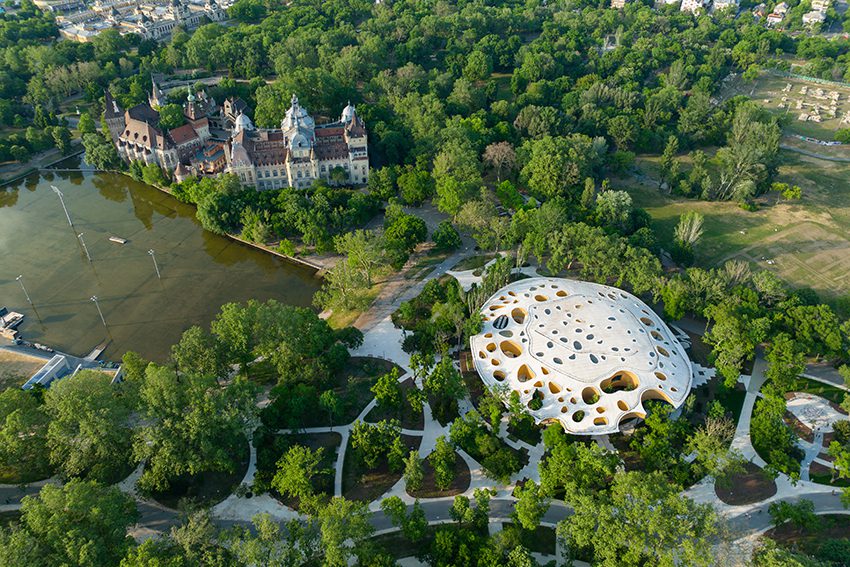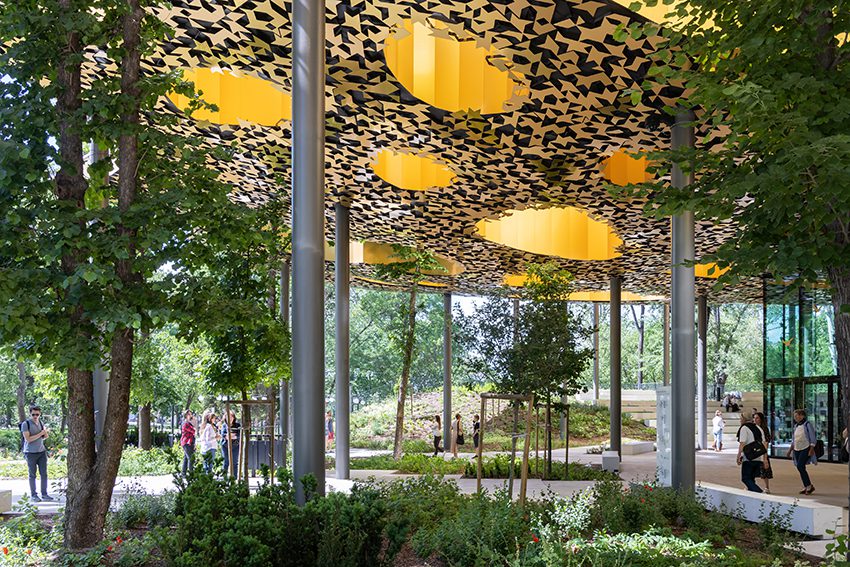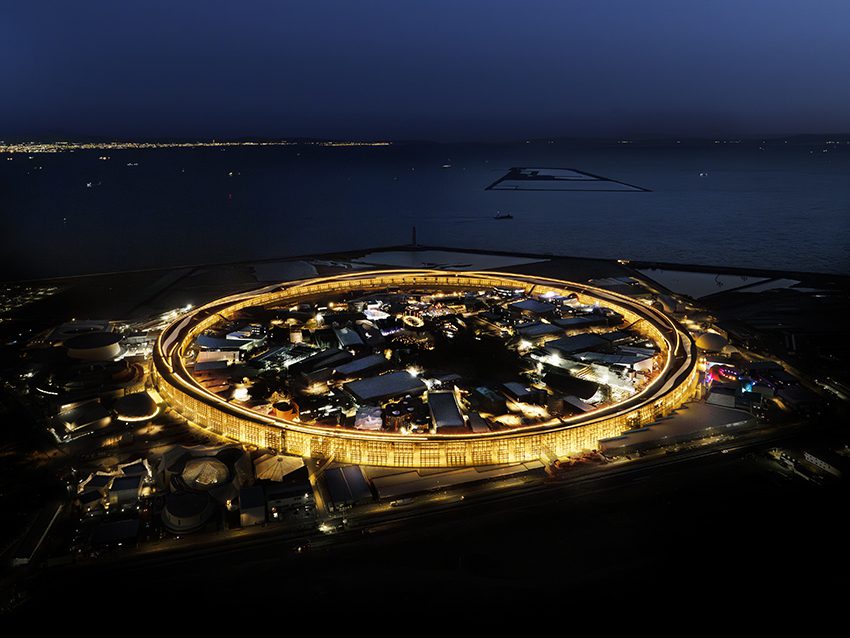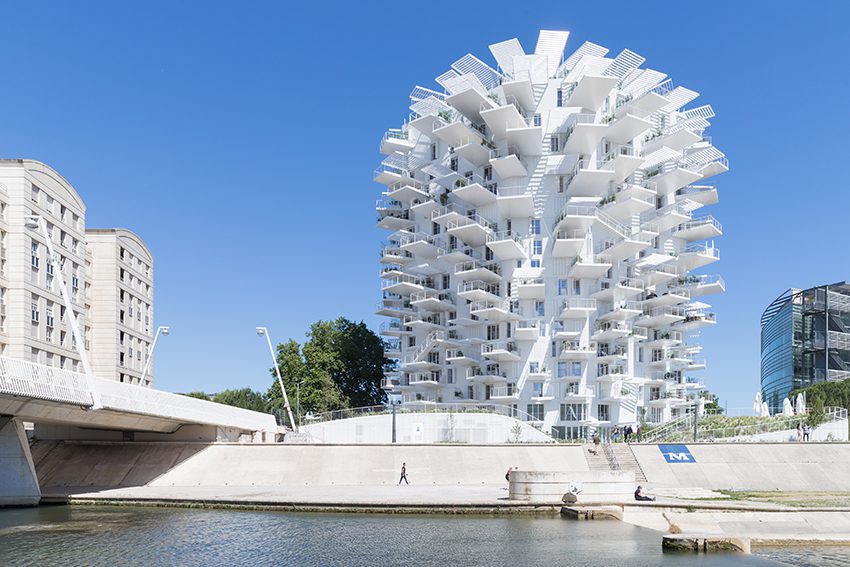Sou Fujimoto (b. 1971) is one of the most influential architects of our times. He is particularly renowned for nature-inspired designs; amongst the most celebrated projects are the L’Arbre Blanc (2019) housing complex in Montpellier, France, and the Serpentine Pavilion 2013 in London. These buildings are instantly recognisable: bright white structures that form lattices or resemble leaves spreading out from a tree.

Now, Mori Art Museum in Tokyo presents the first major survey of Fujimoto’s work. It provides a comprehensive overview of his career in eight sections, covering everything from early ideas, including The Aomori Museum of Art Design Competition Proposal in 2000, to recent projects – like The Grand Ring for Expo 2025 Osaka – as well as those currently underway. It follows his architectural journey over 30 years, and reveals the philosophies that drive his practice forwards. Fujimoto says: “Rather than focusing on looking back at the past, this survey is firmly anchored in the present and looking toward the future. As well as representing the culmination of work to date, it explores potential orientations for continuation.”

The title of the exhibition is Primordial Future Forest. Fujimoto grew up in Higashikagura, a town lush with nature adjacent to Hokkaido Prefecture’s arboreal landscape. Forests are a recurring throughline in his practice, whether that be private homes, universities, retail premises, hotels or multi-purpose complexes. Fujimoto is dedicated to bridging the gap between nature and architecture, and he sees commonalities between the “loose order” and “confusion” of both cities and woodlands. Conceptually, forests, made up of branches and leaves, and cities, dotted with flowerpots, bicycles and billboards, are not so different.

Right now, sustainability and ecological impact are – and should be – at the forefront of architectural discourse. The current Venice Architecture Biennale is dedicated to the subject, with its Curator, Carlo Ratti, saying: “For decades, architecture’s response to the climate crisis has been centred on mitigation – designing to reduce our impact on the climate. But that approach is no longer enough. The time has come for architecture to embrace adaptation: rethinking how we design for an altered world.”

Fujimoto seems to agree. “One of the roles of an architect is to create places that weave together relationships between people and between people and nature,” he explains. “For me, such a place is like a “future forest” where natural and human-made blend together.” A stand-out example is the House of Music Hungary (2021), a cultural complex in Budapest that blends in with the greenery of a park. Its roof mimics a canopy of trees, with numerous openings that allow light to filter through. There’s also Musashino Art University Museum & Library (2010), which features shelves aligned in a spiral pattern: a “forest of books.”

Audiences can expect to see the usual design-exhibition fare: scale models, plans and photos of completed exhibits. But Mori Art Museum is taking curation a step further with Primordial Future Forest. It is presenting large-scale, immersive exhibits – offering audiences the chance to experience Fujimoto’s designs in 360 degrees. It’s also harnessing projections and performance to create an exciting blend of sight and sound. The idea is to engage contemporary art-lovers and architecture enthusiasts alike.

One particularly striking addition is Forest of Future, Forest of Primordial – Resonant City (2025), a proposal for a futuristic city conceived by Fujimoto and Miyata Hiroaki, Professor at Keio University and Signature Project Producer for Expo 2025 Osaka. Like a forest, this metropolis has no absolute centre, creating a new civic paradigm in which people are interlinked in multiple layers. “It would be wonderful if the exhibition could encourage people to imagine how the future would look if we lived in buildings and communities like these,” Fujimoto concludes. “I hope that it will boost people’s hopes, inciting them to think positively about the future.” Primordial Future Forest is certainly an unmissable display for 2025 – an innovatively-curated show that charts the course of a seriously exciting architect working today.
The Architecture of Sou Fujimoto: Primordial Future Forest is at Mori Art Museum, Tokyo.
2 July – 9 November | mori.art.museum
Words: Eleanor Sutherland
Image Credits:
1. L’Arbre Blanc (The White Tree), 2019. Montpellier, France. Photo: Iwan Baan.
2. House of Music Hungary (exterior), 2021. Budapest. Photo: Iwan Baan.
3. Serpentine Gallery Pavilion, 2013, London. Photo: Iwan Baan.
4. The Grand Ring for Expo 2025 Osaka, Kansai, Japan, 2025. Photo courtesy: Japan Association for the 2025 World Exposition.
5. House of Music Hungary, 2021. Budapest. Photo: Iwan Baan.
6. The Grand Ring for Expo 2025 Osaka, Kansai, Japan, 2025. Photo courtesy: Japan Association for the 2025 World Exposition.
7. Shiroiya Hotel, 2020. Gunma, Japan. Photo: Tanaka Katsumasa.





